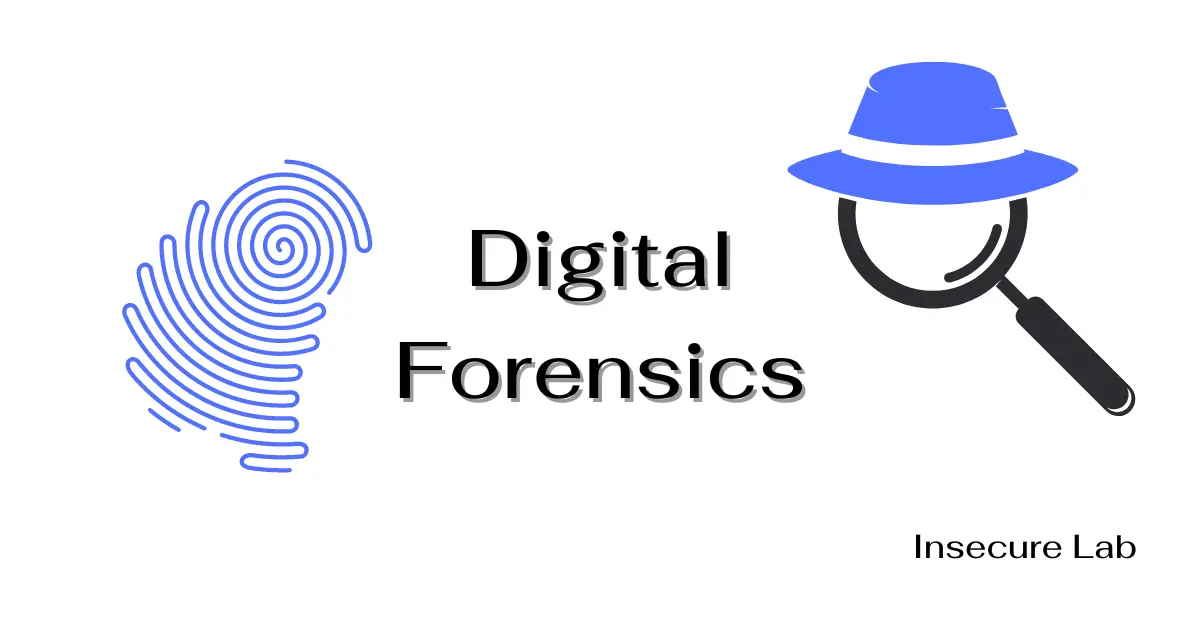🔍 Search
📥 Subscribe
Digital Forensics in Cyber Security

Table of Contents
In this guide we will explore the essentials of digital forensics in cyber security, its importance, investigation process, tools and techniques used, challenges and future trends.
What is Digital Forensics?
Digital forensics, also known as computer forensics, is the process of examining digital devices and data to uncover evidence that can be used in legal proceedings or incident response.
It involves the application of scientific methodologies to recover, analyze, and interpret digital evidence from various sources, including computers, mobile devices, networks, and cloud environments.
Importance in Cyber Security
Digital forensics is essential in cyber security for several reasons:
1. Evidence Collection
It helps collect evidence to identify the source and scope of cyber attacks, enabling organizations to respond appropriately and mitigate future risks.
2. Incident Response
It assists in rapid incident response by providing insights into the nature and extent of security incidents, allowing organizations to contain and remediate threats effectively.
3. Legal Compliance
It aids in ensuring legal compliance by gathering evidence that can be used in legal proceedings, such as prosecutions or regulatory investigations.
4. Risk Management
By identifying vulnerabilities and weaknesses in systems and networks, digital forensics supports risk management efforts, enabling organizations to implement proactive security measures.
5. Damage Assessment
It helps assess the extent of damage caused by cyber attacks, enabling organizations to quantify losses and prioritize recovery efforts.
Key Concepts and Terminologies
- Chain of Custody: A documented record of the handling of digital evidence, ensuring its integrity and admissibility in court.
- Volatility: The tendency of digital evidence to change or disappear over time, requiring quick and efficient collection and preservation.
- Hashing: A cryptographic technique used to generate a unique identifier (hash value) for digital files, ensuring data integrity and authenticity.
- File System Analysis: The examination of file structures and metadata to reconstruct events and identify relevant artifacts.
- Timeline Analysis: The creation of a chronological sequence of events based on timestamps and other metadata extracted from digital evidence.
- Steganography: The practice of concealing information within digital files to evade detection.
- Anti-Forensics: Techniques employed by attackers to hinder or evade digital forensic investigation, such as data destruction, encryption, and obfuscation.
Digital Forensics Investigation Process
Digital forensics follows a well-defined process, often referred to as the Digital Forensics Investigation Process Model (DFIP). This model outlines five critical stages:
1. Identification
Recognizing the need for a digital forensic investigation, usually triggered by a suspected cybercrime or security incident.
2. Acquisition
Securing and collecting potential evidence while maintaining its integrity. This involves creating a write-protected copy of the data to avoid altering the original source.
3. Examination
Analyzing the collected evidence using specialized tools and techniques to extract relevant information. This may involve recovering deleted files, identifying malware traces, and analyzing system logs.
4. Analysis
Interpreting the extracted information to draw conclusions about the incident. This stage involves correlating findings, identifying the perpetrator's methods, and establishing a timeline of events.
5. Presentation
Documenting the findings and presenting them in a clear, concise, and legally sound manner, often used in court proceedings or internal reports.
Tools and Techniques
Digital forensics investigators use a variety of tools and techniques:
- Disk Imaging Tools: Software tools such as EnCase, FTK Imager, and dd (Unix) are used to create forensic images of storage media.
- File Analysis Tools: Tools like Autopsy, Sleuth Kit, and X-Ways Forensics assist in the analysis of file systems and metadata.
- Memory Forensics Tools: Tools such as Volatility and Rekall enable the analysis of volatile memory (RAM) to uncover running processes, network connections, and artifacts left by malware.
- Network Forensics Tools: Wireshark, NetworkMiner, and Bro/Zeek are used to capture and analyze network traffic for evidence of malicious activity.
- Mobile Forensics Tools: Tools like Cellebrite and Oxygen Forensic Detective are designed for extracting and analyzing data from mobile devices.
- Open Source Intelligence (OSINT) Tools: OSINT tools such as Maltego, Shodan, and theHarvester help in gathering information from publicly available sources to support investigations.
Summary
Digital forensics is an essential component of cybersecurity, serving as a powerful tool to investigate cyber crimes, protect sensitive information, and prevent future attacks. As the cyber threat landscape continues to evolve, the demand for skilled digital forensics experts will only increase, making it a promising career path for individuals with a passion for technology and security.
